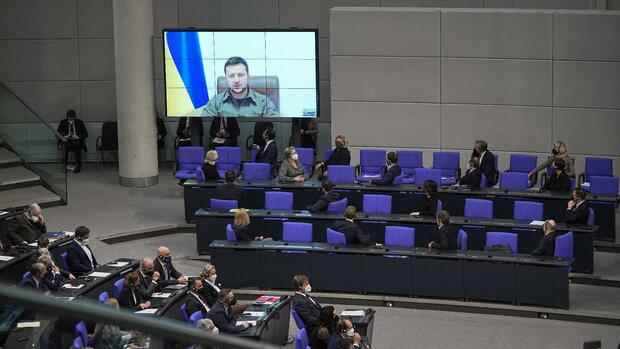Berlin Nation states around the world are currently sending financial, humanitarian or military aid to Ukraine to help the country defend itself from the Russian war of aggression. The Kiel Institute for the World Economy (IfW) has now used media reports and official government statements to reconstruct which country has provided how much of this aid so far.
However, the IfW figures only refer to the period between the outbreak of war on February 24 and March 27. The announced support of the federal government of over one billion euros to Ukraine in the form of armaments aid is not included in this. According to the IfW, the figures for the previous month are updated with a delay of two to three weeks.
In total, around 13 billion euros went to the Ukraine in the period under review, the IfW summarizes in its report for February/March. This also includes deliveries of material for military or humanitarian purposes, which the institute had quantified for evaluation in the so-called “Ukraine Support Tracker”.
The USA is in first place among the countries with the highest absolute payments with just under 7.6 billion euros. Far behind in second place is Poland with almost a billion. Germany ranks fourth with around half a billion euros in support.
Top jobs of the day
Find the best jobs now and
be notified by email.
>> Read here toohow Olaf Scholz justifies the two billion package and why the Union considers it a trick
Christoph Trebesch, research director at the IfW Kiel and responsible for the Ukraine Support Tracker, expressed his surprise to the Handelsblatt about the comparatively low support amounts from all countries. “I’m actually a financial crisis researcher, and the sums involved are often a hundred times higher,” says Trebesch.
In some countries, such as Germany, private donations have exceeded government support. According to the IfW, private donors had provided 631 million euros for humanitarian aid in Germany by March 25. At the end of March, Olaf Scholz announced only 370 million euros for this purpose. However, according to the IfW, it has not been possible to track how much of this has actually been paid out to date.
Insufficient information
The report also sees insufficient public information on military support. In the case of France, for example, there was only one public announcement from the Élysée Palace during the investigation period that defensive weapons had been delivered to Ukraine.
However, since there was no precise information here, the IfW did not include France’s military support. The federal government is also withholding precise details about German arms deliveries.
When looking at the proportion of support provided in relation to GDP, it is above all the countries neighboring Russia that are in first place. Estonia, which spends almost 0.8 percent of its economic output on Ukraine, tops the list, followed by Poland with almost 0.2 percent and Lithuania with 0.05 percent.
“The physical proximity to Russia or the Ukraine obviously plays a major role in the commitment of some Eastern European countries,” Trebesch estimates. It is also remarkable that the USA would give more than the entire EU, in whose neighborhood the war was raging.
According to calculations by the IfW, all EU countries together received 2.9 billion euros in aid by March 27th. In addition, there are 1.4 billion euros from the EU institutions and two billion euros from the European Investment Bank.
For comparison: Germany alone spent a total of over 17 billion euros on the Afghanistan mission, in which the Bundeswehr was involved. However, this was also a conflict that lasted for more than 20 years.
Trebesch finds it remarkable that the domestic political packages to cushion the economic consequences of the Ukraine war in Western Europe are often better funded than Ukraine itself now around three billion. “It shows a clear spending priority.”
More: No clear traffic light commitment to the two percent target

